Themed collection Nanoscale and Nanoscale Horizons: Nanoparticle Synthesis

Bimetallic core–shell nanocrystals: opportunities and challenges
We present an overview of the opportunities provided by bimetallic core–shell nanocrystals, followed by a discussion of the challenges and promising solutions regarding the elucidation of the true surface composition and its dynamics.
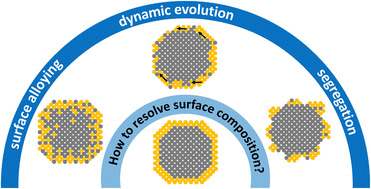
Nanoscale Horiz., 2023,8, 1194-1204
https://doi.org/10.1039/D3NH00098B
Shape control with atomic precision: anisotropic nanoclusters of noble metals
When plasmonic metal nanoparticles become smaller and smaller, a new class of nanomaterials—metal nanoclusters of atomic precision—comes to light, and recently shape control at the atomic level for new functionality has become an attractive topic.
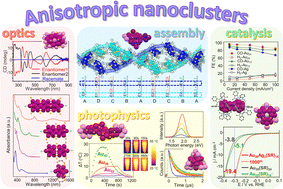
Nanoscale Horiz., 2023,8, 991-1013
https://doi.org/10.1039/D3NH00125C
Functionalized nanoparticles: Tailoring properties through surface energetics and coordination chemistry for advanced biomedical applications
Significant advances in nanoparticle-related research have been made in the past decade, and amelioration of properties is considered of utmost importance for improving nanoparticle bioavailability, specificity, and catalytic performance.
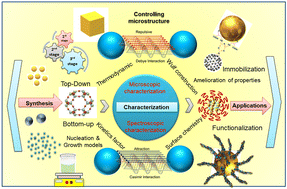
Nanoscale, 2023,15, 6075-6104
https://doi.org/10.1039/D2NR07163K
Retrospective analysis of the key molecules involved in the green synthesis of nanoparticles
Emerging nanotechnology leads to success in synthesizing and applying nanoparticles (NPs) using the green-chemistry approach.
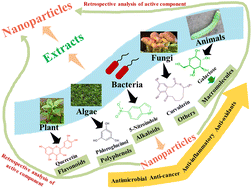
Nanoscale, 2022,14, 14824-14857
https://doi.org/10.1039/D2NR03632K
Oleic acid/oleylamine ligand pair: a versatile combination in the synthesis of colloidal nanoparticles
Oleic acid and oleylamine are added in a solution containing suitable precursors and they can often form complexes with metal ions. These complexes may be thermally decomposed to yield ligand-coated nanoparticles with a tendency to form assemblies.
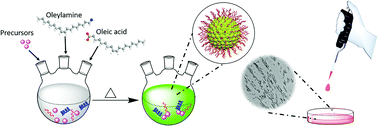
Nanoscale Horiz., 2022,7, 941-1015
https://doi.org/10.1039/D2NH00111J
Intelligent control of nanoparticle synthesis through machine learning
Machine learning-assisted synthesis of nanoparticles.

Nanoscale, 2022,14, 6688-6708
https://doi.org/10.1039/D2NR00124A
Synthesis, modification and application of titanium dioxide nanoparticles: a review
This review mainly discusses the development of TiO2-based materials including synthetic methods, dopants and structural modifications, and applications. A comprehensive analysis of the different aspects of TiO2 is described.
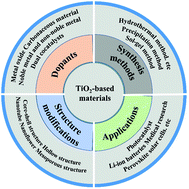
Nanoscale, 2022,14, 6709-6734
https://doi.org/10.1039/D1NR08349J
Green approaches for the synthesis of metal and metal oxide nanoparticles using microbial and plant extracts
Green synthesis approaches are gaining significance as promising routes for the sustainable preparation of nanoparticles, offering reduced toxicity towards living organisms and the environment.

Nanoscale, 2022,14, 2534-2571
https://doi.org/10.1039/D1NR08144F
Precursor chemistry of metal nitride nanocrystals
We review the chemistry that leads or could lead to colloidal metal nitride nanocrystals, via solution-based methods.
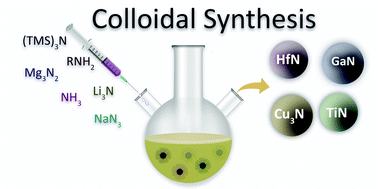
Nanoscale, 2021,13, 18865-18882
https://doi.org/10.1039/D1NR05092C
Functionalized silica nanoparticles: classification, synthetic approaches and recent advances in adsorption applications
Silica nanoparticles have evolved from the field of nanotechnology to different fields of science and engineering. An overview of silica nanoparticles going from definitions to properties, synthetic approaches and applications is presented.

Nanoscale, 2021,13, 15998-16016
https://doi.org/10.1039/D1NR04048K
A review of the role and mechanism of surfactants in the morphology control of metal nanoparticles
The roles of surfactants in the morphology control of nanoparticles are reviewed, including dispersion, structure direct, cap, reduction, etch, and ion exchange. The application of surfactants in the synthesis of nanoparticles is prospected.
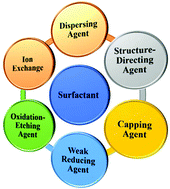
Nanoscale, 2021,13, 3895-3910
https://doi.org/10.1039/D0NR07339C
Role of carboxylates in the phase determination of metal sulfide nanoparticles
At low carboxylate concentrations the sulfur source is highly reactive thiourea, which gives rise to sulfur rich nanoparticles. At high carboxylate concentrations, the sulfur source is the less reactive thiocyanate, resulting in sulfur poor phases.
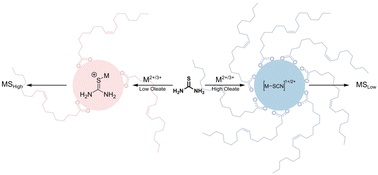
Nanoscale Horiz., 2023,8, 1386-1394
https://doi.org/10.1039/D3NH00227F
Phosphinecarboxamide based InZnP QDs – an air tolerant route to luminescent III–V semiconductors
In this paper, we report the use of phosphinecarboxamide as a convenient, air and moisture tolerant group-V precursor for the simple synthesis of InP-based quantum dots.
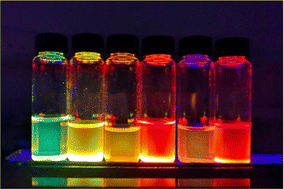
Nanoscale Horiz., 2023,8, 1411-1416
https://doi.org/10.1039/D3NH00162H
Colloidal synthesis of the mixed ionic–electronic conducting NaSbS2 nanocrystals
Mixed ionic-electronic conducting NaSbS2 NCs with different sizes (50 to 90 nm) and shapes (cube, quasi-spherical cuboctahedra and truncated cubes) were synthesized using a colloidal approach by systematically changing the reaction parameters.

Nanoscale Horiz., 2023,8, 1262-1272
https://doi.org/10.1039/D3NH00097D
Facile synthesis of high-entropy alloy nanoparticles on germanane, Ge nanoparticles and wafers
High-entropy alloy nanoparticles (HEA NPs) can be synthesized on germanane (GeNSs), Ge nanoparticles (GeNPs) and bulk Ge.
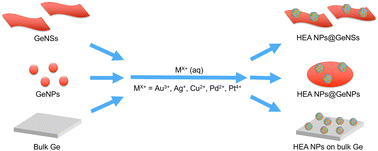
Nanoscale Horiz., 2023,8, 1217-1225
https://doi.org/10.1039/D3NH00178D
Simple engineering of hybrid cellulose nanocrystal–gold nanoparticles results in a functional glyconanomaterial with biomolecular recognition properties
Hybrid cellulose nanocrystal-gold nanoparticles engineered with sugar headgroups is a functional glyconanomaterial that permits a direct visualization of the sugar headgroups-lectins interactions by cryo-transmission electron microscopy.
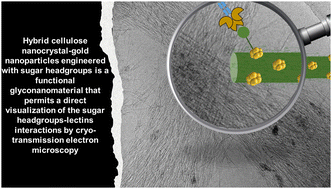
Nanoscale Horiz., 2023,8, 776-782
https://doi.org/10.1039/D3NH00063J
Thermally driven phase transition of cobalt hydroxide sheets via cobalt oxides to cobalt nanoparticles
We investigated phase transitions of Co(OH)2 nanosheets by in situ scanning transmission electron microscopy heating experiments. The layered Co(OH)2 transformed to Co nanoparticles via CoO phases; spinel Co3O4 was formed with temperature reduction.

Nanoscale Horiz., 2022,7, 1210-1216
https://doi.org/10.1039/D2NH00218C
Theoretical framework and experimental methodology to elucidate the supersaturation dynamics of nanocrystal growth
We developed theoretical and experimental methodology to characterize the supersaturation dynamics underlying nanocrystal growth. This can be used to identify supersaturation-associated shape evolutions, and predict growth profiles, of nanocrystals.

Nanoscale Horiz., 2022,7, 376-384
https://doi.org/10.1039/D1NH00572C
A microfluidic approach for synthesis and kinetic profiling of branched gold nanostructures
Automatized approaches for nanoparticle synthesis and characterization represent a great asset to their applicability in the biomedical field by improving reproducibility and standardization, which will help meet the regulatory authorities' criteria.
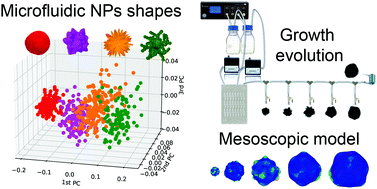
Nanoscale Horiz., 2022,7, 288-298
https://doi.org/10.1039/D1NH00540E
Controlled deposition of nanoparticles with critical Casimir forces
Nanocrystal assembly represents the key step to develop next-generation optoelectronic devices with properties defined from the bottom-up. In this paper, we show that the critical Casimir effect allows direct control over superstructure morphology.

Nanoscale Horiz., 2021,6, 751-758
https://doi.org/10.1039/D0NH00670J
Simulated annealing fitting: a global optimization method for quantitatively analyzing growth kinetics of colloidal Ag nanoparticles
A global optimization protocol based on simulated annealing has been developed to analyze in situ growth kinetics data of colloidal nanoparticles, leading to determining the principal kinetic parameters of heterogeneous solid/liquid reactions.
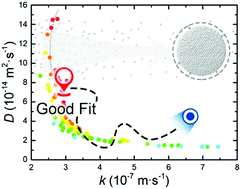
Nanoscale Horiz., 2021,6, 568-573
https://doi.org/10.1039/D1NH00152C
Regulating the morphology and structures of wet-chemical synthesized L10-FePtMn nanoparticles by applying magnetic fields
The attachment of spherical FePtMn NPs was facilitated by applying magnetic fields. The ordering degree and coercivity of NPs have been improved by applying magnetic fields and doping Mn element with high susceptibility.
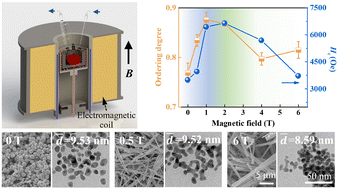
Nanoscale, 2023,15, 10042-10049
https://doi.org/10.1039/D3NR01037F
Synthesis of titanosilicate nanoparticles with high titanium content from a silsesquioxane-based precursor for a model epoxidation reaction
Bottom-up synthesis of titanosilicate nanoparticles was demonstrated with using a Ti-incorporated cubic silsesquioxane cage as a precursor. The catalytic tests suggest that well-dispersed and stabilized Ti species served as the active sites.

Nanoscale, 2023,15, 9792-9800
https://doi.org/10.1039/D3NR01385E
Ligand dynamics on the surface of CdSe nanocrystals
Classical molecular dynamics simulations can help understand the locations, binding modes and mobilities of carboxylate ligands on CdSe nanocrystals, aiding in the optimization of their overall performance and efficiency.

Nanoscale, 2023,15, 7410-7419
https://doi.org/10.1039/D2NR06681E
Multimetallic post-synthetic modifications of copper selenide nanoparticles
Here, we find that cation exchange and metal deposition outcomes are insensitive to either synthetic approach or metal mixture. However, extent and composition of the added metals varies with both metal combination and synthetic approach.

Nanoscale, 2023,15, 6655-6663
https://doi.org/10.1039/D3NR00441D
Design of Eu(TTA)3phen-incorporated SiO2-coated transition metal oxide nanoparticles for efficient luminescence and magnetic performance
We demonstrate the design of multifunctional nanoparticles (NPs) via double layer approach. This approach is suitable for applying the synthesis of luminescent and magnetic NPs with long-term luminescence stability and paramagnetic properties.

Nanoscale, 2023,15, 4604-4611
https://doi.org/10.1039/D2NR05439F
Reaction stoichiometry directs the architecture of trimetallic nanostructures produced via galvanic replacement
Galvanic replacement (GR) of bimetallic nanoparticles (NPs) provides a versatile route to interesting trimetallic nanostructures, with the reaction stoichiometry governing the overall architecture of the product NPs.
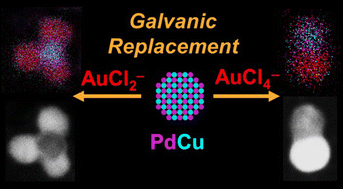
Nanoscale, 2023,15, 3749-3756
https://doi.org/10.1039/D2NR06632G
Dextran/eudragit S-100 based redox sensitive nanoparticles for colorectal cancer therapy
Synthesis of disulfide chemistry based redox sensitive DEEU NPs without using any additional chemical crosslinker for colorectal cancer.
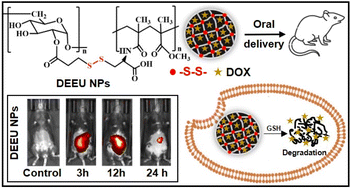
Nanoscale, 2023,15, 3273-3283
https://doi.org/10.1039/D3NR00248A
Nucleation of zeolitic imidazolate frameworks: from molecules to nanoparticles
A range of Density Functional Theory and Tight Binding calculations are employed to investigate the pre-nucleation processes that lead to the formation of ZIF crystals, finding that amorphous clusters might play a key role.

Nanoscale, 2023,15, 3504-3519
https://doi.org/10.1039/D2NR06521E
Halide-driven polymorph selectivity in the synthesis of MnX (X = S, Se) nanoparticles
Polymorph selectivity controlled by halide precursor.
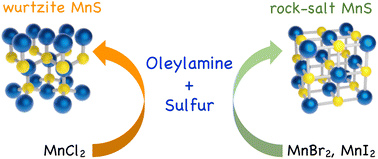
Nanoscale, 2023,15, 2650-2658
https://doi.org/10.1039/D2NR05854E
NiS2 nanoparticles by the NaCl-assisted less-liquid reaction system for the magnesium-ion battery cathode
NiS2 nanomaterials were successfully prepared in a less-liquid reaction system based on NaCl. It has excellent electrochemical performance when used as cathode material of magnesium ion battery.

Nanoscale, 2023,15, 1702-1708
https://doi.org/10.1039/D2NR06055H
Synthesis and degradation mechanism of renally excretable gold core–shell nanoparticles for combined photothermal and photodynamic therapy
Photothermal therapy using Zein gold nanoshell as a potent therapeutic aproach in the treatment of tumors.
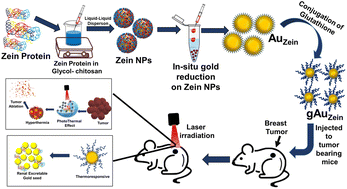
Nanoscale, 2023,15, 1273-1288
https://doi.org/10.1039/D2NR05283K
Colloidal synthesis of nanoparticles: from bimetallic to high entropy alloys
A unique approach based on the colloidal route allowing the synthesis of monodisperse bimetallic, trimetallic, tetrametallic and pentametallic nanoparticles with diameters around 5 nm as solid solutions.

Nanoscale, 2022,14, 9832-9841
https://doi.org/10.1039/D2NR02478K
Laser-ablation assisted strain engineering of gold nanoparticles for selective electrochemical CO2 reduction
This article reports a facile laser ablation in liquid (LAL) strategy for synthesizing gold nanoparticles (Au NPs) whose rich compressive strain can greatly promote the electrochemical CO2 reduction performance of Au.
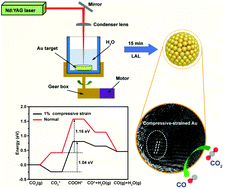
Nanoscale, 2022,14, 7702-7710
https://doi.org/10.1039/D2NR01400A
Template synthesis of dual-functional porous MoS2 nanoparticles with photothermal conversion and catalytic properties
This contribution offers new opportunities for using porous MoS2 particles as promising candidates for photothermal-assisted catalysis.
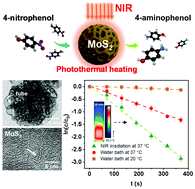
Nanoscale, 2022,14, 6888-6901
https://doi.org/10.1039/D2NR01040B
Electrical and chemical properties of vacancy-ordered lead free layered double perovskite nanoparticles
In this work we synthesized and investigated the properties of vacancy-ordered lead-free layered double perovskite (LDP) nanoparticles.
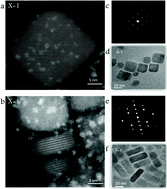
Nanoscale, 2022,14, 3487-3495
https://doi.org/10.1039/D2NR00565D
Screening on-chip fabricated nanoparticles for penetrating the blood–brain barrier
We synthesized a series of brain-targeting drug nanocarriers on multi-channel syringe pump-integrated microfluidic chips, and evaluated their performance in penetrating the blood–brain barrier by in vitro and in vivo experiments.

Nanoscale, 2022,14, 3234-3241
https://doi.org/10.1039/D1NR05825H
Synthesis of Co/CeO2 hetero-particles with abundant oxygen-vacancies supported by carbon aerogels for ORR and OER
We present a hybrid composed of CeO2 decorated Co nanoparticles supported on 3D porous carbon aerogels (Co-CeO2/C aerogels) with superior electrocatalytic performance towards the both ORR and OER by CeCl3/K3Co(CN)6-chitosan hydrogels derived method.
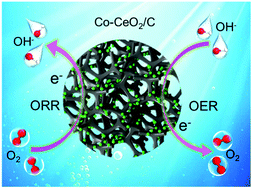
Nanoscale, 2022,14, 1997-2003
https://doi.org/10.1039/D1NR07595K
Synthesis of gold nano-mushrooms via solvent-controlled galvanic replacement to enhance phototherapeutic efficiency
In galvanic replacement, it was found that the solvent polarity had a significant effect on the formed nanostructure. Hollow-tailed Au nano-mushrooms were synthesized under co-solvent conditions and used in effective cancer phototherapy.
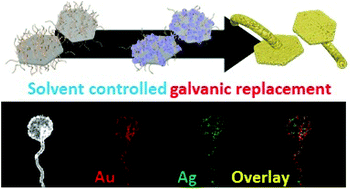
Nanoscale, 2022,14, 1409-1420
https://doi.org/10.1039/D1NR06634J
Bulk and surface exsolution produces a variety of Fe-rich and Fe-depleted ellipsoidal nanostructures in La0.6Sr0.4FeO3 thin films
Bulk & surface exsolution of Fe produces various nanostructures in Lanthanum Strontium Ferrite (LSF) thin films.
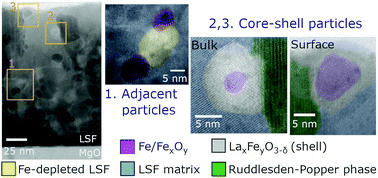
Nanoscale, 2022,14, 663-674
https://doi.org/10.1039/D1NR06121F
Enzymatically synthesised MnO2 nanoparticles for efficient near-infrared photothermal therapy and dual-responsive magnetic resonance imaging
Manganese dioxide (MnO2) are attractive for biomedical applications due to their biocompatibility, stimuli-responsive magnetic resonance imaging (MRI) properties and capability to modulate the hypoxic tumour microenvironment (TME).

Nanoscale, 2021,13, 11093-11103
https://doi.org/10.1039/D1NR02400K
Small iron oxide nanoparticles as MRI T1 contrast agent: scalable inexpensive water-based synthesis using a flow reactor
Small iron oxide nanoparticles (IONPs) were synthesised in water via co-precipitation by quenching particle growth after the magnetic iron oxide phase formed.
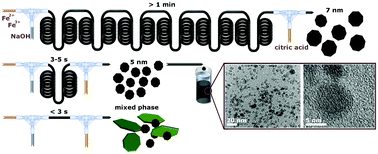
Nanoscale, 2021,13, 8795-8805
https://doi.org/10.1039/D1NR00877C
In situ immobilization of Fe/Fe3C/Fe2O3 hollow hetero-nanoparticles onto nitrogen-doped carbon nanotubes towards high-efficiency electrocatalytic oxygen reduction
We demonstrate a feasible synthesis of Fe/Fe3C/Fe2O3 hollow hetero-nanoparticles in situ immobilized on highly graphitic nitrogen-doped carbon nanotubes via a hydrogel-bridged pyrolysis strategy for excellent electrocatalytic oxygen reduction.
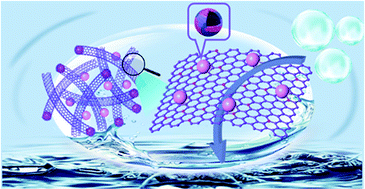
Nanoscale, 2021,13, 5400-5409
https://doi.org/10.1039/D1NR00078K
Engineering porous Pd–Cu nanocrystals with tailored three-dimensional catalytic facets for highly efficient formic acid oxidation
An innovative strategy is developed to prepare porous Pd–Cu nanocrystals with engineered morphology and highly exposed three-dimensional catalytic facets, which demonstrate considerably improved activity toward formic acid oxidation.

Nanoscale, 2021,13, 3709-3722
https://doi.org/10.1039/D0NR09164B
A facile synthesis of Cu catalysts with multiple high-index facets for the suppression of competing H2 evolution during electrocatalytic CO2 reduction
The formation of high-index facets were realized via the electropolishing process before and after annealing at different temperatures and exhibited the suppression of H2 evolution and C1 products during the electrochemical CO2 reduction.

Nanoscale, 2021,13, 3042-3048
https://doi.org/10.1039/D0NR07286A
Peptoid-directed assembly of CdSe nanoparticles
Pre-assembled peptoid tubes and sheets are used as a generalizable platform to template the assembly of controllable densities of CdSe quantum dots and clusters through a robust, covalent linkage.

Nanoscale, 2021,13, 1273-1282
https://doi.org/10.1039/D0NR07509D
Size-controlled nanocrystals reveal spatial dependence and severity of nanoparticle coalescence and Ostwald ripening in sintering phenomena
Colloidal nanocrystals allow investigating sintering phenomena in supported catalysts.
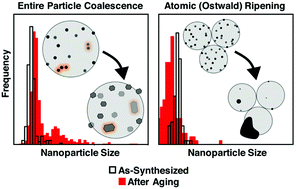
Nanoscale, 2021,13, 930-938
https://doi.org/10.1039/D0NR07960J
About this collection
This online collection from Nanoscale and Nanoscale Horizons showcases some of the recent nanoparticle synthesis papers published in the journals.
We hope you enjoy reading these articles!